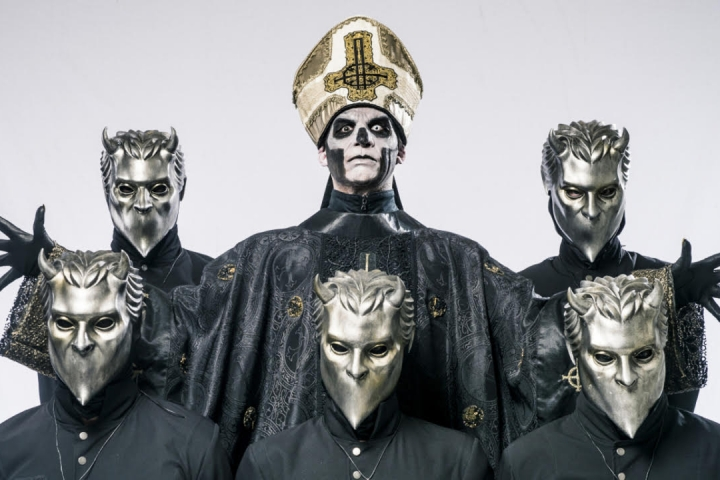Blog
Ghost: The Rise of Rock’s Occult Icons
Introduction: In the realm of modern rock, few bands have captured the imagination and intrigue of audiences quite like Ghost. Known for their theatrical performances, elaborate stage personas, and blend of heavy metal with melodic rock, Ghost has carved out a unique niche in the music world. This article explores the origins, evolution, and lasting impact of Ghost, shedding light on how they have become one of the most captivating acts in contemporary rock.
Origins and Formation: Ghost was formed in Linköping, Sweden, in 2006 by Tobias Forge, who adopted the stage name Papa Emeritus. The band’s lineup, known as the Nameless Ghouls, has remained shrouded in mystery, with members wearing identical, face-concealing costumes. This anonymity allows the music and the band’s dark, theatrical aesthetic to take center stage. Their debut album, “Opus Eponymous” (2010), introduced listeners to their unique sound, combining elements of classic rock, heavy metal, and occult themes.
Breakthrough and Theatrical Evolution: Ghost’s breakthrough came with their second album, “Infestissumam” (2013), which featured more polished production and a broader range of musical influences. The album’s lead single, “Secular Haze,” and tracks like “Year Zero” showcased the band’s ability to blend eerie atmospheres with catchy melodies. Their live performances became increasingly elaborate, with Papa Emeritus donning papal robes and delivering sermons-like performances, while the Nameless Ghouls provided a powerful musical backdrop.
Rising Popularity and Critical Acclaim: The release of “Meliora” (2015) marked a significant milestone in Ghost’s career. The album, featuring hits like “Cirice” and “He Is,” received critical acclaim and earned them their first Grammy Award for Best Metal Performance. “Meliora” saw the band refining their sound, combining heavy riffs with lush, melodic arrangements. Their growing popularity was further solidified with the follow-up EP, “Popestar” (2016), and its lead single “Square Hammer,” which became one of their most successful songs.
Themes and Imagery: Central to Ghost’s appeal is their blend of dark, occult themes with a theatrical presentation. Their lyrics often explore topics such as anti-religion, apocalypse, and the supernatural, delivered through a lens of satire and dark humor. The changing personas of their frontman, from Papa Emeritus to Cardinal Copia and eventually Papa Emeritus IV, add a narrative layer to their music, creating a sense of continuity and evolution in their storytelling.
Continued Success and Evolution: Ghost’s fourth album, “Prequelle” (2018), continued their trajectory of success, delving into themes of mortality and the Black Death. With singles like “Rats” and “Dance Macabre,” the band showcased their ability to blend infectious hooks with grandiose musical arrangements. Their elaborate stage shows, complete with pyrotechnics, intricate costumes, and dramatic set designs, have made their live performances a spectacle to behold.
Legacy and Influence: Ghost’s influence extends beyond their music. Their theatricality, combined with their ability to craft memorable, genre-blending songs, has inspired a new generation of rock and metal bands. They have reinvigorated interest in theatrical rock, drawing comparisons to acts like Alice Cooper, King Diamond, and David Bowie, while carving out a distinct identity that is uniquely their own.
Conclusion: Ghost’s rise from the underground metal scene to international stardom is a testament to their innovative blend of music, theatricality, and storytelling. Their ability to captivate audiences with both their sound and visual presentation has set them apart as one of the most intriguing bands in modern rock. As they continue to evolve and push the boundaries of their genre, Ghost’s legacy as occult icons and masterful performers remains firmly established.
 Skip to content
Skip to content

